|
Before we dive into more exquisite embroidery from China, just a little shout-out to the Fiber Talk podcasts. On Sunday, I had my second lovely conversation with Gary discussing my ongoing journey from craftsperson to textile artist, my trip to China, the reality of turning your skill into your business and so on. We laughed a lot and hope that you`ll enjoy the conversation too! You can listen via the player on the Fiber Talk website (were you'll find hundreds of other engaging podcasts with fellow embroidery people!) or you can watch the episode on FlossTube. In previous blog posts I have shown you the oldest pieces of embroidery I saw in China as well as beautifully embroidered rank badges. Today we will examine the court robes worn by the Qing emperor (AD 1644-1911) and his closest relatives. These lavish robes are decorated with the symbol of the emperor: the dragon. Hence their name: dragon robes. But there is more than just gorgeously embroidered dragons on these robes. After all, we are in China :). These robes are packed with meaning. Luckily, there was a very helpful picture in the National Silk Museum, Hangzhou pointing out the different motives and their meaning: The different symbols are arranged in three distinct circles. Around the neck you'll find the sun (life force) and the moon on the shoulders and constellation of three stars (the handle of the sign Ursa Major; illumination) and the rock (stability) on the front and the back. The next circle runs over the chest and features the axe (distinction between right and wrong) and double bow (dispensing of justice) on the front, as well as a pair of dragons and a pheasant (light and colour). The third circle at knee-level sports a pair of bronze sacrificial cups (courage and wisdom), waterweed (purity), grain (nourishment and sustenance) and fire (warmth and light). When the emperor conducted certain important ceremonies he would sit facing south. The major symbols on his dragon robe would then allign with the wider architecture of the Forbidden City: the sun on his left shoulder with the Altar of the Sun in the East, the constillation of the three stars on his chest with the Altar of Heaven in the South, the moon on his right shoulder with the Altar of the Moon in the West and the Rock at the nape with the Altar of Earth in the North. And this is the real thing: a dragon robe featuring nine dragons. This particular robe would have been worn by an imperial prince during the summer. The background cloth is imperial yellow silk only to be used by the emperor and very close relatives. Above is a picture of one of the dragons featuring in the third circle just above the seam. The dragon mainly consists of couched gold threads (Japanese thread) and accents in silk embroidery. The small motives surrounding the dragon are stitched with silk in satin stitch. Among these small motives are bats (left of the right hind-leg of the dragon), pairs of peaches (at the top of the picture, right above the head of the dragon) and flaming pearls (the couched roundel with red silk embroidery, left of the head of the dragon) and many clouds. The hem is decorated with ocean waves, mountains, coral and rocks. Here you'll see the tiny bats, peaches and clouds in more detail. I particularly love the bats. Aren't they geniusly stitched? They are tiny, but there is so much characteristic detail. Just look at the ears and the whiskers! The Chinese word for bat and for happiness are the same. Red coloured bats are even better as the colour red and the word for majestic/subleme are also the same. Bats depicted together with peaches confer the wish `May you live long and happy`. And here is a detail of the seam of the prince's dragon robe. I particularly like the way the circular wave in the middle is embroidered. Very effective shaded split stitch for the spiral, surrounded by satin stitched `white heads`. The design lines of the `white heads` are further defined by couching down a single gold thread. The vertical stripes at the bottom represent deep water. Stylished multi-coloured rocks rise from the waters. The ancient Chinese preceived the world as being surrounded by four oceans.
You can find more information on dragon robes and embroidered symbols in: Bertin-Guest, J. 2003. Chinese Embroidery traditional techniques, Krause Publications, ISBN 087349718-X. This book also explains the embroidery techniques in detail and comes with 16 (increasingly difficult!) designs to work yourself.
6 Comments
I originally made the drawings for this new goldwork project at the end of September last year. But with the China teaching trip and the holiday season, I hadn't really started in earnest. As I want to include this piece in my first solo-exhibition in August, it became about time to seriously make a start. My first attempt was so 'enthusiastically', that I decided to pull it all out, flip my slate frame and start again. What had happened? My design transfer was just rubbish. As I have only a small light-box, transferring larger designs demands attention. The kind of attention to detail you don't have when you really, really want to start :). The good thing about starting again: the flipped slate frame! Most people probably don't know that you can use a slate frame upside-down; just like the Chinese embroiderers do. It comes with two big advantages. First: your arm rests on the horizontal bar of your slate frame rather than on your embroidery. Secondly: the horizontal bars of your slate frame prevent spools of thread from rolling off your frame. But beware: the second point might tempt you into putting much more onto the frame than is beneficial for the tension of your embroidered piece... This is what Pope Francis currently looks like. As we have had so much snow with the accompanying dark skies, couching silver coloured Japanese threads with two shades of white and two shades of grey is very hard on your eyes. That's why I decided to work the figure of Pope Francis and the background simultaneously. What materials and techniques have I used so far? The figure of Pope Francis is created with or nue. This means that I am using pairs of silver coloured Japanese Thread #8 and couch them down with a single thread of DeVere Yarns six-fold (120 denier) silk. I am using Crystal, Lily, Cloud and Foil. His shoes were stitched with satin stitch using a single strand of a stranded silk by the Silk Mill colour Black Alder. I embroidered the fringes on the fascia with Turkey rug stitch using DeVere Yarns 18-fold (360 denier) tightly twisted silk colour Hessian. After all the or nue has been done, I will add pearls for the buttons and I will define some folds by couching a separate metal thread on top. Much as I did with St. Laurence. As mentioned in my first blog post on this new goldwork project, I am modelling the background on an existing late-Medieval orphrey from the Netherlands. I started by putting in the tiled floor. For the tiles I used four colours of Chinese flat silk: two greens and two reds. Using the darker shades in the back creates a sense of depth. The tiles are stitched with a simple satin stitch following the grain of the fabric. Then I couched a single strand of Gilt smooth passing #5 on top using the matching colour of silk. Last but not least, I embroidered the grout with small chain stitches using two strands of the Silk Mill Black Alder. I had learned from St. Laurence to don't leave too big a space for the figure, that's why bits of the tiling will be covered by the figure. The small areas of blue sky at the top of the orphrey were embroidered using light-blue Chinese flat silk and long-and-short stitch. Evenly spaced single threads of Gilt smooth passing #5 were couched down on top using the same silk. Since late-Medieval embroiderers mainly worked in commercial workrooms, efficiency was important. Plunging threads? Far too time consuming! Just add a few more anchoring stitches at the end and just snip off the metal thread. In addition, metal threads would frequently continue to run underneath silk embroidery. Securing and snipping off takes more time than just stitch over them. I wondered how far you can take this approach :). The small bright-green turrets were just perfect candidates to try this out. I satin stitched the turrets with Soie Ovale by Au ver a Soie #0199. Then I added an outline of chain stitches using the Silk Mill Black Alder. You wouldn't know that there is passing thread running beneath them!
As this blog post is getting rather long, we will talk about the windows and the padding for the screen behind the figure in a future blog post. I will group all blog posts concerning this goldwork project under the category 'Pope Francis' for quick future reference. When I was teaching embroidery in China last year, I saw so many beautifully embroidered items. Far too many to put into one blog post. Today we will explore a very distinctive form of embroidered items: rank badges. Those square pieces of densily embroidered cloth that were sewn onto the formal dress of Qing-dynasty (1644-1911 AD) court officials. The Qing emperors were the last house to rule China. They were not native Chinese, but rather a nomadic minority from Manchuria. Due to a power vacuum in the middle of the 17th century they were able to take over the dragon throne. Native Chinese viewed these newcomers as barbarians. Vice versa, the Manchu viewed the Chinese as too refined. Discrimination and mistrust were the result. In an attempt to at least minimize discrimination amongst the court officials and to legitimize their new dynasty, court dress was completely renewed by the new emperor. Modelled on Manchu dress, but with strict rules on who could wear what and when. As the imperial administration became ever more complex, it was necessary to be able to easily distinguish people's place or rank in the system. There were nine ranks of civil officials all sporting a different bird on their rank badge. From first to ninth rank these were: Manchurian crane, golden pheasant, peacock, wild goose, silver pheasant, egret, mandarin duck, quail and paradise flycatcher. The badges (called pu zi) were sewn onto the surcoat pu fu, or 'coat with a patch' and worn over the formal court robes. The badges would be sewn onto the front as well as onto the back. That's why a pair always consists of a 'whole' one for the back and a 'split' one for the front. Why did they use birds to differentiate between civil officials? As always, everything depicted has more than one meaning for the Chinese. Birds collectively were seen as a symbol of literary elegance. Additionally, the crane was associated with happiness and longevity. The wild goose and the mandarin duck represented loyalty; not an unimportant quality for a court official. Military officials wore rank badges too. Instead of birds, animals associated with courage and ferocity adorn these badges. Again there are nine ranks and from first to ninth rank these are the animals depicted: qi lin (a mythical creature with the head of a dragon, scales on his body, the legs of a stag and a bushy tail), lion, leopard, tiger, bear, panther, rhinoceros and sea-horse. Lower ranks of the imperial nobility were also permitted to wear the military rank badges. The wives of military and civil officials adorned their formal dress with rank badges too. Rather than being part of the court, they would wear their dress with badges during important social occasions such as marriages. Besides his official empress, the emperor had many secondary consorts and concubines. They were ranked as well. And with so many potential partners, he had many offspring too. The emperor, his sons, first-rank princes, second-rank princes, third-rank princes, fourth-rank princes, imperial dukes and other non-imperial nobles wore round rank-badges displaying dragons. The number of dragons you could wear depended on your rank. As did the type of dragon you were permitted to wear: front-facing dragons were higher in rank than side-facing dragons. And five-clawed dragons (long) were higher in rank than four-clawed dragons (mang).
If you have enjoyed reading about official court dress, I can highly recommend the book 'Imperial Wardrobe' by Gary Dickinson and Linda Wrigglesworth (2000, ISBN: 1-58008-188-6) for further reading. This is the revised edition of an original from 1990. When I was in the Netherlands shortly before Christmas, I and my parents stumbled upon a lovely Middle Eastern shop in Utrecht. They mainly sell ceramics, but they also have a rather large collection of textiles. Among the latter; several embroidered items of clothing and cushion covers. I bought a dress showing Fallahi or Palestinian embroidery. For those of you living in the Netherlands: the name of the shop is 'Samira' and you'll find them at Oude Gracht 209. The friendly Egyptian man running the store is happy for you to come in to see the textiles on display. They also have a website with many pictures of old Bedouin dresses. Here you see the front and the back of the dress. According to the seller, this dress comes from the Bedouin living in the Sinai dessert. This is confirmed by the seam sporting bands of slanted tent stitches. Dresses like these always tell a story... Firstly, the dress has been patched together from many pieces. Sometimes embroidered pieces have been sewn onto the background cloth (as is the case for the collar you see pictured above) or... ...embroidered pattern pieces have been sewn into the dress (as is the case for the sleeves you see pictured above). Furthermore, the dress has been patched up in many, many places. You can also see in the picture above that the cross stitches are worked on a good quality cotton satin. Not at all easy to count! And consequently the embroiderer made many mistakes in the geometric patterns. There is always a marked mistake in these embroideries as only God is faultless. Why is this dress patched together the way it is? Firstly, it would take a Bedouin woman about three years to embroider a festive dress like this. Her days are filled with many household tasks and thus she would only have limited time to embroider. Consequently, it is normal that wear and tear would be repaired as best as possible. But what could she do when her life changed dramatically? Brides and married women would wear dresses embroidered with shades of red. Widowed women would use dark blue. And widows who would like to marry again would use a red collar. Once re-married, she would stitch reddish accents on top of the blue. Here we thus have the dress of a widowed woman seeking to re-marry. A very similar dress is depicted on page 40 of the book: 'Stickereien für 1001 Nacht' (Embroideries for 1001 nights) by Anna Dolanyi from 1989, ISBN 3-473-42427-7. What else can we learn from this lovely piece of old embroidery? Well, the wearer was probably right-handed as the right sleeve shows much more wear and tear than the left one. Furthermore, I think the woman had a baby or small child on her hip. The collar has been torn and this would typically happen when a child grasps the collar when it does not want to be put down :).
|
Want to keep up with my embroidery adventures? Sign up for my weekly Newsletter to get notified of new blogs, courses and workshops!
Liked my blog? Please consider making a donation or becoming a Patron so that I can keep up the good work and my blog ad-free!
Categories
All
Archives
July 2024
|
Contact: info(at)jessicagrimm.com
Copyright Dr Jessica M. Grimm - Mandlweg 3, 82488 Ettal, Deutschland - +49(0)8822 2782219 (Monday, Tuesday, Friday & Saturday 9.00-17.00 CET)
Impressum - Legal Notice - Datenschutzerklärung - Privacy Policy - Webshop ABG - Widerrufsrecht - Disclaimer
Copyright Dr Jessica M. Grimm - Mandlweg 3, 82488 Ettal, Deutschland - +49(0)8822 2782219 (Monday, Tuesday, Friday & Saturday 9.00-17.00 CET)
Impressum - Legal Notice - Datenschutzerklärung - Privacy Policy - Webshop ABG - Widerrufsrecht - Disclaimer

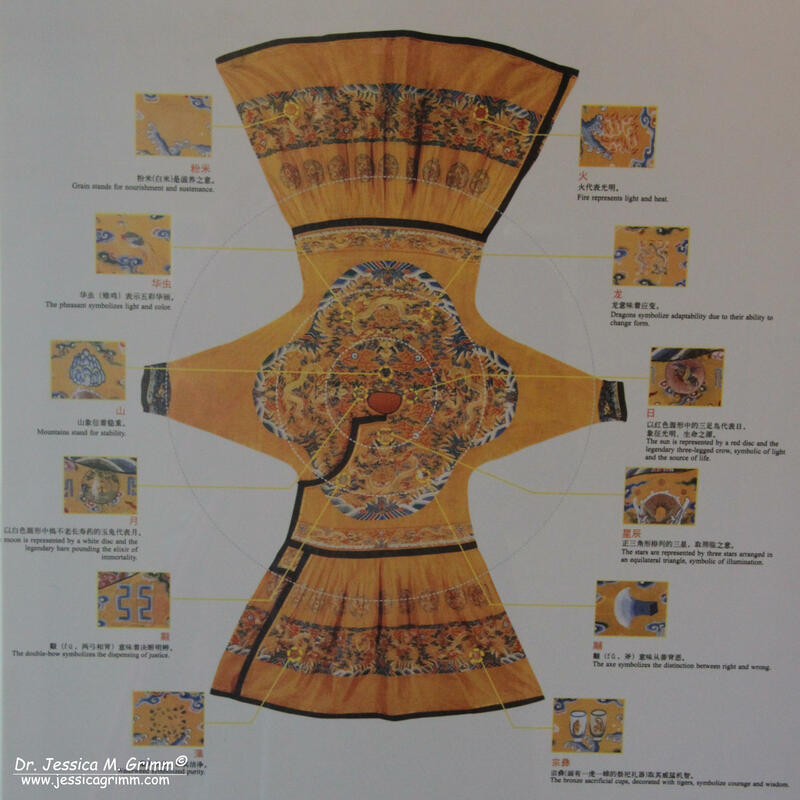





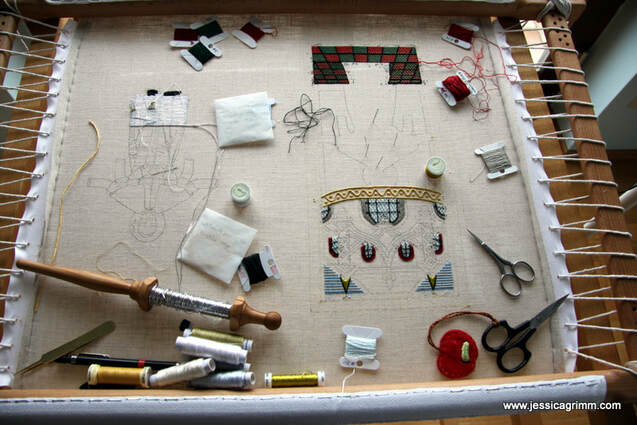


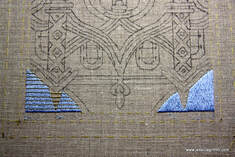




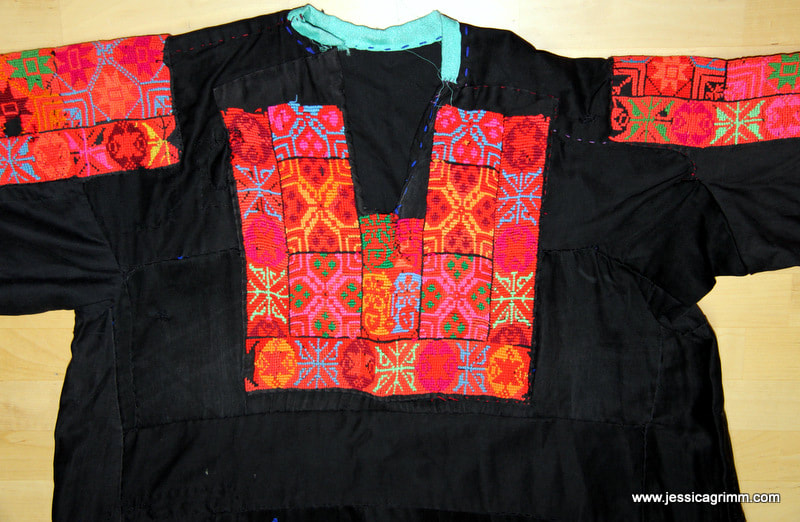
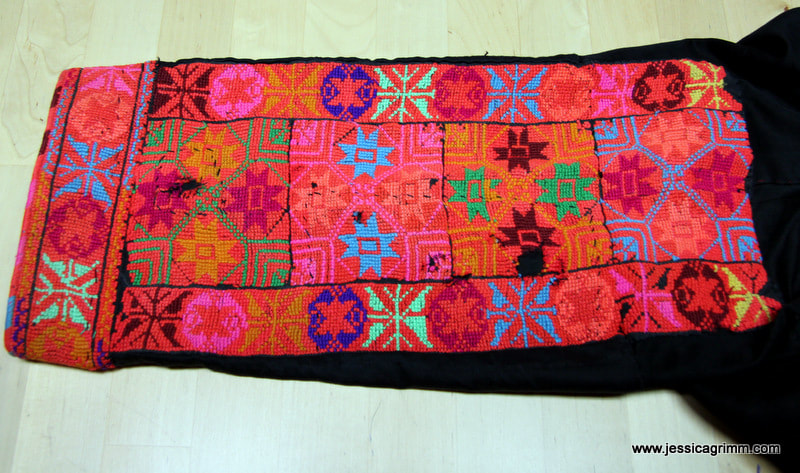






 RSS Feed
RSS Feed